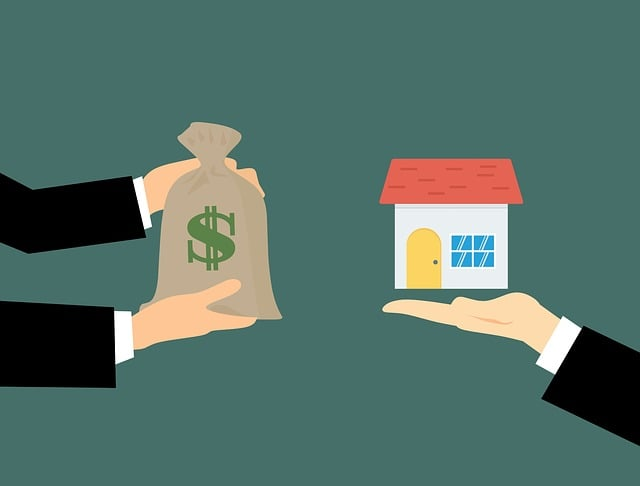
Real estate investing offers a pathway to financial growth, but it’s not for the faint of heart. The intricate web of terms and jargon associated with this field can be overwhelming, yet understanding real estate terminology is a cornerstone of successful investment. Let’s delve into the importance of comprehending real estate terminology and how it can make or break your investment ventures.
New to passive real estate investing?
Explore Ark7 OpportunitiesPrecision in Communication:
Real estate transactions involve a multitude of stakeholders, from realtors and lenders to contractors and property managers. Precise communication is vital to avoid misunderstandings that could lead to costly mistakes. By mastering real estate terminology, investors can articulate their goals, expectations, and requirements clearly, fostering smoother transactions and building strong professional relationships.
Informed Decision-Making:
Real estate investing requires making a myriad of decisions, from choosing the right property to determining the most suitable financing option. Without a solid understanding of terms like cap rate, cash flow, and equity, investors risk making uninformed decisions that may negatively impact their returns. A well-informed investor armed with the right terminology can analyze potential investments more effectively and make strategic choices that align with their financial goals.
Risk Mitigation:
Real estate is not without its risks, and understanding the associated terminology is crucial for risk mitigation. Terms like market analysis, due diligence, and diversification empower investors to assess and manage risks effectively. A comprehensive grasp of these concepts enables investors to identify potential pitfalls, conduct thorough property evaluations, and diversify their portfolios strategically, reducing the overall risk exposure.
Negotiation Advantage:
Negotiation is a fundamental skill in real estate, and fluency in terminology provides a distinct advantage. Investors who understand terms like comparable sales, appraisals, and financing options can negotiate more confidently and assertively. This knowledge allows them to navigate negotiations with sellers, agents, and lenders more effectively, ensuring they secure the best possible terms and deals.
Financial Planning and Analysis:
Real estate is a long-term investment, and successful investors engage in meticulous financial planning. Key terms like amortization, loan-to-value ratio, and gross rent multiplier are essential for financial analysis. Investors who grasp these concepts can accurately project cash flows, evaluate the potential return on investment, and make sound financial decisions that align with their overall investment strategy.
Legal Compliance:
Real estate transactions involve legal intricacies that can be complex and challenging to navigate. Understanding terms related to legal aspects, such as zoning regulations, easements, and title insurance, is essential to ensure compliance with local laws and regulations. Failing to comprehend these terms may lead to legal complications that could jeopardize an investment.
Top Real Estate Investing Terms to Know

1031 Exchange
A 1031 Exchange refers to a provision in the U.S. Internal Revenue Code that allows real estate investors to defer capital gains taxes when selling a property by reinvesting the proceeds into a similar property of equal or greater value.
Accredited Investor
An Accredited Investor is an individual or entity that meets specific financial criteria and is deemed by securities regulators to have the sophistication and experience necessary to participate in certain high-risk investment opportunities, such as private placements or hedge funds.
Adjustable Rate Mortgage (ARM)
An Adjustable Rate Mortgage is a type of mortgage loan where the interest rate can fluctuate over time based on changes in a specified financial index. This can result in changes to the borrower’s monthly mortgage payments.
Adverse Possession
Adverse Possession is a legal principle that allows an individual to gain ownership of another person’s property by openly occupying and using it for a certain period, typically without the owner’s permission.
APY
APY is a measure used in finance to express the annual interest rate taking into account the effect of compounding. It provides a more accurate representation of the true return on an investment.
Assignment of Contract
Assignment of Contract refers to the transfer of contractual rights and obligations from one party (the assignor) to another (the assignee). In real estate, this can occur when an investor transfers their interest in a purchase contract to another buyer.
Assumption
Assumption, in the context of real estate, occurs when a new buyer takes over the existing mortgage of a property. The new buyer assumes responsibility for the mortgage terms and payments.
Breakeven Occupancy
Breakeven Occupancy is the point at which the rental income from a property covers all of its operating expenses, resulting in a neutral or breakeven cash flow.
Calculating a Cash on Cash Return
Cash on Cash Return is a financial metric used to evaluate the profitability of an investment by dividing the annual pre-tax cash flow by the initial cash investment. It is often expressed as a percentage.
Cash on Cash Return (CoC) is a metric used in real estate investing to evaluate the annual return on cash invested in a property. It provides a percentage that reflects the profitability of an investment relative to the amount of cash invested. The formula for calculating Cash on Cash Return is as follows:
Cash on Cash Return (%)=(Annual Cash Flow/Total Cash Invested)×100
Here’s a breakdown of the components of the formula:
- Annual Cash Flow:
- This represents the net income generated by the property on an annual basis. It includes rental income minus operating expenses such as property management fees, property taxes, insurance, maintenance costs, and other relevant expenses.
- Total Cash Invested:
- This is the total amount of cash you’ve put into the investment property. It includes the down payment, closing costs, and any upfront renovation or improvement costs. It’s essential to consider all the cash you’ve invested to get an accurate measure of your return.
Example: Suppose you invest $50,000 in cash to purchase a rental property. In the first year, the property generates a net cash flow of $8,000.
Cash on Cash Return (%)=($8,000/$50,000)×100≈16%
In this example, the Cash on Cash Return is 16%, indicating that for every dollar invested, you’re earning a return of 16 cents.
It’s important to note that Cash on Cash Return is a straightforward metric, but it has its limitations. It does not account for the property’s appreciation, mortgage principal repayment, or tax implications. Investors often use Cash on Cash Return as a quick initial assessment of the potential profitability of a real estate investment, but they may also consider other metrics for a more comprehensive analysis.
Calculating ROI (Return On Investment)
ROI is a financial metric used to assess the profitability of an investment. It is calculated by dividing the net gain or loss from an investment by the initial cost of the investment and expressing it as a percentage.
Return on Investment (ROI) is a critical metric in real estate that measures the profitability of an investment relative to its cost. To calculate ROI, you can use the following formula:
ROI (%)=(Net Profit/Total Investment Cost)×100
Here’s a breakdown of the components of the formula:
- Net Profit:
- Net profit is the total income generated by the investment property minus all expenses. This includes rental income, minus operating expenses (property management fees, property taxes, insurance, maintenance costs, etc.), mortgage payments, and any other relevant costs associated with the property.
- Total Investment Cost:
- Total investment cost includes the purchase price of the property, closing costs, renovation or improvement costs, and any other upfront expenses associated with acquiring the property.
Example: Suppose you purchase a property for $200,000 and invest an additional $30,000 in closing costs and renovations. After one year, the property generates a net profit of $15,000.
ROI (%)=($15,000/$230,000)×100≈6.52%
In this example, the ROI is approximately 6.52%, indicating that for every dollar invested, you’re earning a return of 6.52 cents.
It’s worth noting that ROI provides a straightforward measure of profitability, but it does not account for factors such as the time value of money, financing costs, or the property’s appreciation. Investors often use ROI as an initial assessment but may also consider other metrics, such as Cash on Cash Return or Internal Rate of Return (IRR), for a more comprehensive analysis of a real estate investment’s performance.
Calculating Vacancy Rate
Vacancy Rate is a percentage that represents the portion of rental units in a real estate market that is unoccupied and available for rent at a given time.
The vacancy rate in real estate is a crucial metric that measures the percentage of vacant units in a rental property or a real estate market. It’s an important indicator for property owners and investors to assess the health and performance of their investments. The formula to calculate the vacancy rate is as follows:
Vacancy Rate (%)=(Number of Vacant Units/Total Number of Units)×100
Here’s a breakdown of the components of the formula:
- Number of Vacant Units:
- This represents the total number of units within a property or a real estate market that are currently unoccupied or available for rent. It could include both units that are actively being marketed for rent and those that are temporarily unoccupied.
- Total Number of Units:
- This is the total number of units within the property or the market, regardless of whether they are currently occupied or vacant.
Example: Let’s say you own an apartment building with 20 units, and currently, 3 of those units are vacant.
Vacancy Rate (%)=(3/20)×100=15%
In this example, the vacancy rate is 15%, indicating that 15% of the total units in the apartment building are currently unoccupied.
Monitoring the vacancy rate is crucial for property owners and investors to make informed decisions about pricing, marketing, and overall property management. A high vacancy rate may suggest issues with market demand, pricing, or property management, while a low vacancy rate indicates a healthy and potentially competitive rental market. It’s important to regularly assess and adjust strategies based on changes in the vacancy rate to optimize the performance of a real estate investment.
Capital Expenditures (CAPEX)
CAPEX refers to the expenses incurred by a property owner for the acquisition, improvement, or maintenance of a property. It is a significant factor in the overall cost of property ownership.
Capital Gains Tax
Capital Gains Tax is a tax imposed on the profit realized from the sale of an asset, such as real estate. The amount taxed is based on the capital gain, which is the difference between the sale price and the purchase price.
Capitalization Rate (CAP)
Capitalization Rate is a measure used by real estate investors to assess the potential return on an investment property. It is calculated by dividing the property’s net operating income by its current market value.
Cash Flow Positive

A property is considered Cash Flow Positive when the rental income exceeds the total expenses associated with owning and operating the property.
Cash for Keys
Cash for Keys is a negotiation where a property owner offers a tenant a monetary incentive to vacate the premises voluntarily and without resistance.
Cash Out Refinance
Cash Out Refinance is a financing option where a property owner refinances their mortgage for an amount greater than the existing loan balance. The excess funds can be used for other purposes, such as home improvements or debt consolidation.
Closing Costs
Closing Costs are the fees and expenses associated with finalizing a real estate transaction. They include charges for services such as title insurance, appraisals, and legal fees.
Contract for Deed
A Contract for Deed, also known as a land contract or installment sale agreement, is a financing arrangement where the seller provides financing to the buyer, allowing them to make payments over time.
Cost Segregation
Cost Segregation is a tax planning strategy used by real estate investors to accelerate depreciation deductions by breaking down the costs of a property into various components with shorter depreciable lives.
Debt Service Coverage Ratio (DSCR)
DSCR is a financial metric used by lenders to assess the ability of a property’s income to cover its debt obligations. It is calculated by dividing the property’s net operating income by its debt service (principal and interest payments).
Debt to Income Ratio
Debt to Income Ratio is a financial metric that compares an individual’s debt payments to their gross income. In the context of real estate, lenders use this ratio to assess a borrower’s ability to manage additional debt.
Debt-to-Equity Ratio
Debt-to-Equity Ratio is a financial metric that compares a company’s debt to its equity, indicating the proportion of financing provided by debt relative to equity. In real estate, it can be used to assess the financial leverage of a property.
Deed of Trust Escrow
Deed of Trust Escrow is a process in real estate transactions where a neutral third party, known as an escrow agent, holds and disburses funds and documents on behalf of the buyer, seller, and lender.
Eviction Example of a REO Property
This refers to the legal process of removing tenants or occupants from a property that has been foreclosed and repossessed by a lender or financial institution.
Example of Calculating APR
Calculating APR (Annual Percentage Rate) involves determining the annualized cost of borrowing, including interest and certain fees. It provides a more comprehensive understanding of the total cost of a loan.
The Annual Percentage Rate (APR) is a comprehensive measure of the total cost of a loan, including both the interest rate and any additional fees or costs associated with obtaining the loan. The APR provides a more accurate representation of the true cost of borrowing than the nominal interest rate alone. To calculate the APR in real estate, you need to consider the loan amount, interest rate, and any associated fees. The formula for calculating APR is as follows:
APR=(Total Finance ChargeLoan Amount)×365/Loan Term (in days)×100
Here’s a breakdown of the components of the formula:
- Total Finance Charge:
- This includes all costs associated with obtaining the loan, such as interest, loan origination fees, points, and other closing costs.
- Loan Amount:
- This is the total amount of money borrowed.
- Loan Term (in days):
- The loan term is the duration of the loan in days. For example, for a 30-year mortgage, the loan term in days would be 30 years * 365 days per year.
Example: Let’s say you have a mortgage with a loan amount of $200,000, an interest rate of 4%, and closing costs and fees totaling $5,000. The loan term is 30 years.
Total Finance Charge=Interest+Fees=($200,000×0.04×30/365)+$5,000
APR=(Total Finance Charge/$200,000)×365/(30×365)×100
After calculating these values, you’ll find the APR, which represents the annualized cost of the loan, including both interest and fees.
Keep in mind that APR is a standardized way of comparing loan costs among different lenders and loan products, providing a more accurate reflection of the true cost of borrowing.
Example of Escrow
Escrow is a financial arrangement where a third party holds and regulates funds and important documents during the process of a transaction. An Example of Escrow in real estate is the holding of earnest money until the closing of the sale.
In real estate, an example of escrow involves the use of an escrow account to hold funds and important documents during the process of a real estate transaction. Let’s break down a typical example:
- Purchase Agreement:
- A buyer and seller agree on the terms of a real estate transaction, and a purchase agreement is signed. This document outlines the conditions of the sale, including the purchase price, closing date, and any contingencies.
- Opening an Escrow Account:
- Upon acceptance of the purchase agreement, the buyer typically deposits an earnest money deposit into an escrow account. This is a good-faith deposit that demonstrates the buyer’s serious intent to proceed with the purchase. The escrow account is usually held by a neutral third party, such as an escrow company or a title company.
- Inspections and Contingencies:
- The buyer has a specified period to conduct inspections and satisfy any contingencies outlined in the purchase agreement. Common contingencies include a satisfactory home inspection, financing approval, or the sale of the buyer’s existing property.
- Addressing Contingencies:
- If the buyer is satisfied with the property and can meet the outlined contingencies, the transaction proceeds. If there are issues that need to be addressed, the parties may negotiate repairs or adjustments to the purchase agreement.
- Securing Financing:
- If the buyer is obtaining a mortgage, the lender may require certain conditions to be met before approving the loan. The escrow account holds the earnest money until all conditions are satisfied.
- Preparing for Closing:
- As the closing date approaches, the escrow holder collects all necessary documents, funds, and signatures from both parties. This may include the deed, loan documents, and any other paperwork required for the transfer of ownership.
- Closing:
- On the closing day, the escrow agent ensures that all conditions have been met. The buyer signs the loan documents, and the seller signs the deed. The buyer’s funds are deposited into the escrow account.
- Distribution of Funds:
- The escrow agent disburses funds to the seller, pays off any existing liens on the property, and handles other financial transactions as required. The deed is recorded with the appropriate government office, officially transferring ownership to the buyer.
Throughout this process, the escrow account serves as a neutral intermediary, holding funds and documents until all conditions are met, providing security and transparency for both the buyer and the seller. This helps ensure a smooth and fair real estate transaction.
Examples of Appreciation

Appreciation refers to the increase in the value of a property over time. Examples of Appreciation include factors such as improvements to the property, neighborhood development, or overall market trends.
Appreciation in real estate refers to the increase in the value of a property over time. This increase can be influenced by various factors, including improvements made to the property, changes in the local real estate market, economic conditions, and other external factors. Here’s an example to illustrate real estate appreciation:
Scenario:
Consider a homeowner, Sarah, who purchases a house for $250,000 in a suburban neighborhood. Over the next five years, several factors contribute to the appreciation of her property.
- Improvements:
- Sarah invests in home improvements, such as renovating the kitchen, upgrading the bathrooms, and landscaping the backyard. These enhancements not only improve the quality of Sarah’s life but also add value to the property.
- Economic Growth:
- The local economy experiences significant growth during these five years, leading to increased job opportunities, a rise in average income levels, and overall economic prosperity. This economic growth can positively impact the demand for housing in the area, contributing to an increase in property values.
- Limited Housing Supply:
- The neighborhood where Sarah’s house is located becomes a popular and desirable area for homebuyers. However, the supply of available homes remains limited. High demand and low supply often result in increased property values.
- Market Appreciation:
- The broader real estate market in the region experiences appreciation. This can occur due to factors such as population growth, urban development, or increased demand from buyers looking to invest in real estate.
- Inflation:
- Inflation, the general increase in prices over time, can also contribute to real estate appreciation. As the cost of goods and services rises, so does the value of tangible assets like real estate.
After five years, Sarah decides to sell her property. The market value of her home has increased, and she is able to sell it for $320,000. The appreciation in the property’s value is calculated as the difference between the selling price and the original purchase price:
Appreciation=Selling Price−Purchase Price
Appreciation=$320,000−$250,000=$70,000
In this example, Sarah’s property appreciated by $70,000 over the five-year period. This increase in value is a result of various factors that positively influenced the local real estate market and the desirability of the neighborhood. Real estate appreciation is a key factor that can contribute to the financial gains of property owners over time.
Examples of Cash Flow
Cash Flow in real estate is the movement of money into and out of a property. Examples of Cash Flow include rental income, operating expenses, and financing costs.
Cash flow in real estate refers to the net income generated by a property after deducting all operating expenses, mortgage payments, and other costs associated with property ownership. Let’s look at an example to illustrate cash flow in real estate:
Scenario:
John owns a residential rental property, a duplex, in a suburban area. Here are the key details:
- Rental Income:
- John rents out one unit for $1,200 per month and lives in the other unit.
- Operating Expenses:
- Property Management Fee: $100 per month (John uses a property management company).
- Property Taxes: $3,000 per year.
- Insurance: $800 per year.
- Maintenance and Repairs: $1,200 per year.
- Miscellaneous Expenses: $500 per year.
- Mortgage Details:
- John has a mortgage on the property with a monthly payment of $1,000, which includes principal and interest.
Let’s calculate the annual cash flow for John’s rental property:
- Calculate Annual Rental Income: Annual Rental Income=Monthly Rental Income×Number of Months in a YearAnnual Rental Income=$1,200×12=$14,400
- Calculate Annual Operating Expenses: Annual Operating Expenses=∑Individual Operating ExpensesAnnual Operating Expenses=$100×12+$3,000+$800+$1,200+$500=$7,100
- Calculate Annual Mortgage Payment:Annual Mortgage Payment=Monthly Mortgage Payment×Number of Months in a YearAnnual Mortgage Payment=$1,000×12=$12,000
- Calculate Cash Flow: Cash Flow=Annual Rental Income−(Annual Operating Expenses+Annual Mortgage Payment)Cash Flow=$14,400−($7,100+$12,000)=$14,400−$19,100=−$4,700
In this example, the cash flow is negative, indicating that the property is not generating enough income to cover all the expenses and mortgage payments. Negative cash flow means that John is spending more on the property than he is receiving in rental income. This situation might prompt John to reevaluate the property’s financial performance or consider strategies to increase income or reduce expenses. Positive cash flow, on the other hand, would indicate that the property is generating a surplus after covering all costs.
Fair Housing Act
The Fair Housing Act is a U.S. federal law that prohibits discrimination in housing based on race, color, religion, sex, national origin, familial status, or disability.
Fair Market Value (FMV)
Fair Market Value is the estimated price that a willing buyer and a willing seller would agree upon for a property in an open and competitive market.
Federal Housing Administration
The Federal Housing Administration is a U.S. government agency that insures mortgages, providing lenders with protection against losses. FHA loans are often used by first-time homebuyers and those with lower credit scores.
Fixed Rate Mortgage
A Fixed Rate Mortgage is a type of mortgage loan where the interest rate remains constant throughout the life of the loan, providing predictable monthly payments for the borrower.
Foreclosure
Foreclosure is a legal process by which a lender reclaims a property from a borrower who has failed to make mortgage payments. The lender can then sell the property to recover the outstanding loan amount.
Gross Annual Rental Income
Gross Annual Rental Income is the total income generated by a rental property before deducting any expenses, vacancies, or other costs.
Gross Rental Income
Gross Rental Income is the total income generated by a rental property before subtracting operating expenses.
Home Equity Line of Credit
A Home Equity Line of Credit (HELOC) is a revolving line of credit secured by the equity in a borrower’s home. It allows the borrower to borrow funds as needed up to a predetermined limit.
Impound Account
An Impound Account, also known as an escrow account, is a financial account set up by a lender to collect and hold funds for property-related expenses such as property taxes and insurance.
Internal Rate of Return (IRR)
Internal Rate of Return is a financial metric used to evaluate the profitability of an investment by calculating the discount rate that makes the net present value of future cash flows equal to the initial investment.
Limited Partner (LP)
A Limited Partner is an investor in a partnership who has limited liability and a passive role in the management of the business. Limited partners are typically not involved in day-to-day operations.
Loan Origination Fee
A Loan Origination Fee is a charge imposed by a lender for processing a new loan application. It is often expressed as a percentage of the total loan amount.
LTV (Loan To Value) Ratio
Loan To Value Ratio is a financial metric that expresses the ratio of a loan amount to the appraised value or purchase price of a property. It is used by lenders to assess risk.
Mortgage Insurance

Mortgage Insurance is a policy that protects the lender in case the borrower defaults on the mortgage. It is often required for loans with a high loan-to-value ratio.
Mortgage Loan
A Mortgage Loan is a type of loan used to finance the purchase of real estate, with the property itself serving as collateral for the loan.
Mortgage Recast
Mortgage Recast is the process of adjusting the monthly mortgage payments by re-amortizing the remaining loan balance. This does not change the interest rate or loan terms.
Net Operating Income
Net Operating Income is the total income generated by a property minus its operating expenses, excluding debt service and income taxes.
Notice of Default
Notice of Default is a formal notification issued by a lender indicating that a borrower is in breach of the mortgage agreement, usually due to non-payment. It is the first step in the foreclosure process.
Occupancy Rate
Occupancy Rate is the percentage of rental units in a property or market that are currently occupied by tenants.
Operating Expenses
Operating Expenses are the costs associated with owning and maintaining a property, including property management fees, property taxes, insurance, and maintenance.
Passive Income
Passive Income is income earned with minimal effort or involvement. In real estate, rental income is often considered passive income for property owners who are not actively involved in day-to-day management.
Principal, Interest, Taxes, Insurance (PITI)
PITI represents the components of a mortgage payment, including Principal (loan amount repaid), Interest (cost of borrowing), Taxes (property taxes), and Insurance (homeowners insurance).
Private Mortgage Insurance
Private Mortgage Insurance is a type of insurance that protects the lender in case the borrower defaults on a mortgage with a high loan-to-value ratio. It is typically required for conventional loans.
Property Taxes
Property Taxes are taxes imposed by local governments based on the assessed value of a property. Property owners are required to pay these taxes to fund public services and infrastructure.
Property Value
Property Value is the estimated worth of a property in the real estate market. It can be influenced by factors such as location, amenities, and market trends.
Purchase Sale Agreement
A Purchase Sale Agreement, also known as a Purchase and Sale Agreement or Sales Contract, is a legally binding contract outlining the terms and conditions of a real estate transaction between a buyer and a seller.
Quit Claim Deed
A Quit Claim Deed is a legal document used to transfer the ownership interest in a property from one party to another. Unlike a warranty deed, it does not guarantee the grantor’s ownership rights.
Real Estate Investment Associations
Real Estate Investment Associations (REIAs) are organizations or groups of real estate investors who come together to share knowledge, resources, and opportunities related to real estate investing.
Real Estate Investment Trust (REIT)
A Real Estate Investment Trust is a company that owns, operates, or finances income-generating real estate. It allows individuals to invest in a diversified portfolio of real estate assets.
Real Estate Owned (REO)
Real Estate Owned refers to properties that have been repossessed by a lender, often through foreclosure, and are now owned by the lending institution.
Realtor vs. Real Estate Agent

A Realtor is a real estate professional who is a member of the National Association of Realtors (NAR) and adheres to its Code of Ethics. A Real Estate Agent is a licensed professional engaged in the buying and selling of real estate.
Squatters
Squatters are individuals who occupy a property without legal permission or ownership rights. Dealing with squatters can pose legal challenges for property owners.
Tax Lien
A Tax Lien is a claim by the government against a property for unpaid property taxes. It may result in a tax sale or foreclosure if the taxes remain unpaid.
Title Insurance
Title Insurance is a type of insurance that protects property owners and lenders from financial loss due to defects in a property’s title, such as outstanding liens or ownership disputes.
Turnkey Property
A Turnkey Property is a fully renovated and ready-to-rent property that requires minimal effort or additional investment from the buyer or investor.
Wrap Around Mortgage Loan
A Wrap Around Mortgage Loan, or wraparound mortgage, is a financing arrangement where an existing mortgage is retained, and a new mortgage “wraps around” the old one. The new mortgage encompasses the old mortgage, and the borrower makes payments on the wraparound loan.
How to Apply Real Estate Investing Terms in Real Life

Real estate investing is a dynamic and rewarding field that offers individuals the opportunity to build wealth and financial stability. However, navigating the complex terminology associated with real estate can be intimidating for newcomers. In this article, we will guide you through the process of applying real estate investing terms in real life, demystifying the jargon and providing practical insights for success.
Understanding the Basics:
Before diving into real-world applications, it’s crucial to grasp the fundamental terms associated with real estate investing. Key terms include:
- Cap Rate (Capitalization Rate): This metric evaluates the potential return on an investment property. Understanding how to calculate and interpret cap rates is essential for assessing the profitability of a real estate venture.
- Cash Flow: This term refers to the net income generated by a property after deducting operating expenses. Positive cash flow is a key indicator of a sound investment.
- Equity: Equity represents the ownership value in a property. Learning how to build equity through mortgage repayment and property appreciation is vital for long-term success.
Market Analysis and Property Valuation:
Applying real estate investing terms begins with conducting a thorough market analysis and property valuation. Utilize terms such as:
- Comparable Sales (Comps): Analyzing recent sales of similar properties in the area helps determine the fair market value of a potential investment.
- Gross Rent Multiplier (GRM): This ratio assists in assessing the potential profitability of rental properties by comparing the property’s price to its rental income.
- Financing Strategies:
Real estate investing often involves leveraging financial resources. Familiarize yourself with terms related to financing, such as:
- Loan-to-Value Ratio (LTV): LTV is a crucial metric for lenders, representing the percentage of the property’s value financed through a loan.
- Amortization: Understanding how loan payments are structured over time is essential for planning and managing debt.
- Risk Management:
Mitigating risks is an integral part of successful real estate investing. Incorporate terms like:
- Diversification: Spreading investments across different property types or locations helps reduce risk exposure.
- Due Diligence: Thoroughly researching and analyzing a potential investment before committing is a critical aspect of risk management.
- Exit Strategies:
Real estate investors should always have a plan for exiting an investment. Key terms include:
- Appreciation: The increase in a property’s value over time is a significant factor in determining profit potential upon selling.
- 1031 Exchange: This tax-deferred exchange allows investors to reinvest proceeds from the sale of one property into another, deferring capital gains taxes.
By applying real estate investing terms in real life, you can make informed decisions, mitigate risks, and maximize returns. Whether you’re a seasoned investor or a beginner, mastering the language of real estate is the key to unlocking the doors of financial success in this dynamic and rewarding industry.
Ready to start your real estate investing journey? Consider the following resources:
- Fractional Ownership Real Estate: Colorado
- Fractional Ownership Real Estate: Florida Investing Tips
- Fractional Real Estate vs. Timeshare Ownership
